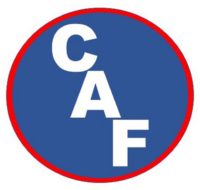TRAINING SCENERIO
This description was from a training exercise that involved 4-person structure firefighter crews and 3 CAF instructors. This exercise involved live fire at the department’s training center and two-story burn building. The CAF instructors rotated with the crews on entry exercises.
On one instructor’s 3rd rotation, the crew of 4 decided to attack the first-floor fire from the second floor, basically simulating a basement fire. (see diagram)

Having made numerous top/down training attacks in his career, the instructor wasn’t really thrilled about facing the heat AGAIN!!!
This exercise utilized 150’ of 1-3/4” hose, CAF at .3% Solution and 2:1 Water/Air mixture, applied at 100 psi using a 15/16” smooth bore tip on a 1-1/2” shut off butt.
THE PLAN
Enter the building on the 2nd floor right at the top of the stairway (the chimney).
Apply CAF above the upper half of the stairway. Move down to the landing, apply CAF above the lower half off the stairway and make the way down to the fire room door, enter the fire room and knock down (but not completely extinguishing) the fire.

WHAT HAPPENED
Once the entry crew (4 firefighters plus 1 instructor) entered the building and closed the exterior door, the heat from the lower fire began to immediately build up quickly and visibility dropped to zero. All the crew members were hunkered down on the floor. After the heat built up, the CAF nozzle was opened – CAF was applied to the walls and ceiling above the top half of the stairway in a horse-shoe pattern (link) for 20 seconds. The nozzle was then closed for situational assessment. Visibility instantly improved not only to the point that the firefighters could see each other, but the stairway landing was clearly visible. As no heat was felt, helmets started popping up and soon, all the crew members were standing at the top of the chimney (stairway). One firefighter walked (not crawled) down the steps to the landing and looked around the corner to the lower half of the stairway. The firefighter hand signaled for the crew and hose to move down to the landing.
While on the landing, the heat and smoke began to build up, however, all the firefighters remained standing. The bottom half of the stairs was no longer visible.
A short time later, CAF was again applied, this time to the walls and ceiling over the lower half of the stairs, again using a horse-shoe pattern for 20 seconds. All heat disappeared and the door to the fire room was clearly visible. A glow from the fire room was also visible. Again, one firefighter walked down the steps and looked into the fire room. Again, using only a visible hand signal, the rest of the crew walked down the steps to the fire room door. Bubbles were visible clinging to the walls and ceiling above the fire room door (<187°). Looking into the fire room, the fire was visible climbing the wall and rolling across the ceiling, however, all the firefighters remained standing up right at the door, the entrance to the chimney.

Despite the active fire, the backup crew was plainly visible across the fire room.
While the firefighters stood watching the fire, the backup crew suddenly opened up their CAF stream towards the entry crew. They used a horse-shoe pattern around the fire for less than 20 seconds, basically pushing any heat towards the stairway door. The firefighters at the door could feel the heat, but it was not enough to get any of them to drop to the floor level. They all stood and watched.
As soon as the backup crew shut off their nozzle, one of the entry firefighters commented on how uneventful the scenario turned out. The entry crew started pulling their hose back up stairs to exit the building. The back up crew also exited the building.
During a post exercise discussion, the backup crew was asked why they kept knocking down the fire during the exercise. They stated that they never opened they nozzle until they saw the entry crew standing at the fire room door and then only because they knew the scenario was about to end and they wanted in on the fun. They also stated that both times the entry crew applied CAF in the stairway, the roaring fire instantly dropped to barely a flicking campfire.
There are 3 takeaway points to remember:
- CAF instantly increases visibility as the carbon has a affinity to the foam.
- Not only does CAF pull the heat out of the atmosphere around the application, since bubbles float and can be pulled into the fire flow stream, CAF can reduce the intensity of a remote fire.
- CAF streams do not push the fire heat. If it did, standing in the chimney doorway when the backup crew opened their nozzle would have been unbearable.



































